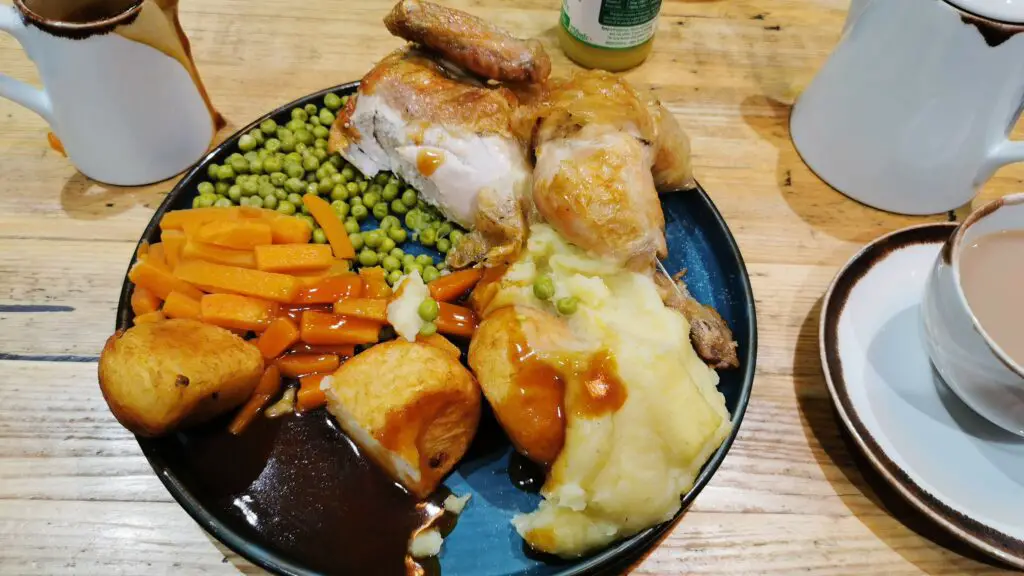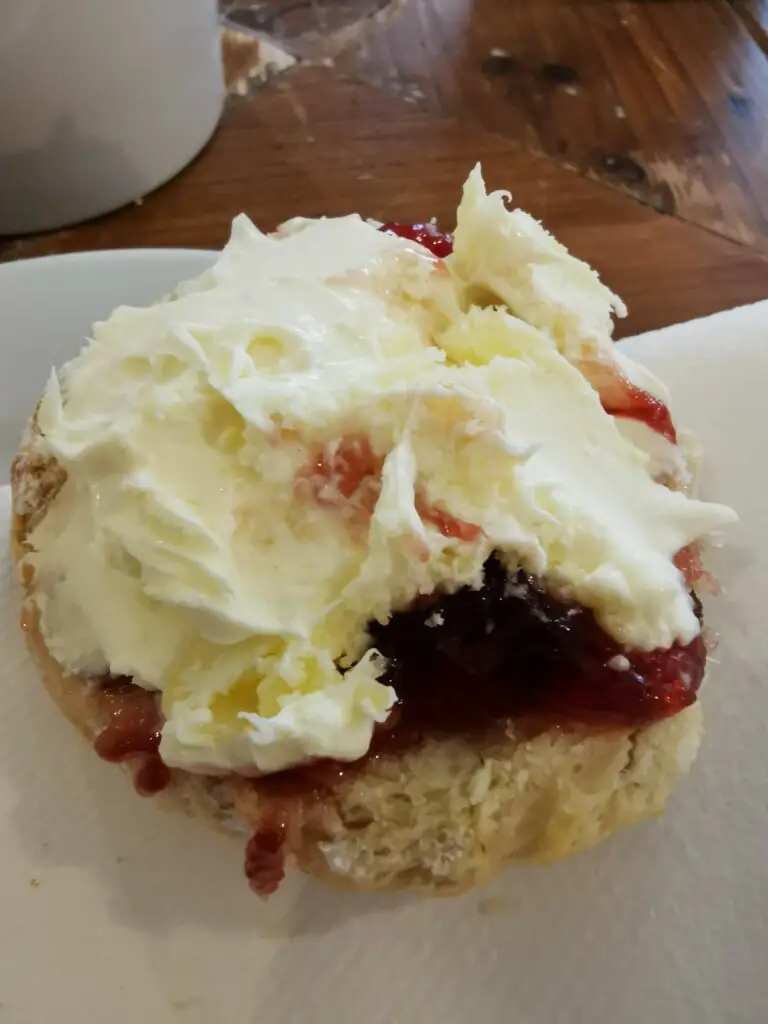When you think of cuisines from around the world, British food isn’t one of those that might ignite your appetite. However, the past has a lot to answer for and while British cuisine didn’t always have the best rep, it’s come a long way. What you’ll find on the plates of British restaurants are mouth watering, comfort dishes that have to be tasted to be appreciated.
So, if you’re visiting us from foreign shores, let me first welcome you to the UK. I know you’re probably keen to see what’s on offer here but before you head out there, take a look over our guide to British cuisine so you know exactly what to expect.
What Do You Think Of When We Say ‘British Cuisine?’
Do you remember that episode of F.R.I.E.N.D.S when Rachel made a ‘traditional British trifle?’ She got the recipe book pages stuck together and ended up making half a trifle and half a shepherd’s pie. Although for the record, she actually made a cottage pie since the meat of choice was beef and not lamb; there’s an intricacy for you.
But regardless, those are two dishes that a lot of people would think of when asked to name a type of British cuisine. There’s plenty of others where that came from too; the roast dinner being one but the classic meat and two veg is something that’s seen in households across the country.
Pies are incredibly popular in the UK, especially up North where people take real pride in making their pies. There are even pie awards being given away in the UK so you can see how seriously we take this dish!
The thing is that while there are some dishes that are always going to be synonymous with Great Britain, the cuisine is always evolving. If you look back over time, the food we eat has changed consistently and since so many ingredients are being brought in from abroad, our options are becoming limitless.
I remember having a conversation with my mother about the food she ate in the 1950s and 1960s. She talked about how things like rice and pizza hadn’t been around for very long and even though more people were eating them, they were still considered to be ‘exotic’ foods. This leads us nicely on to the history of British cuisine.
The History Of British Food
Something to remember about cuisine is that countries tend to use ingredients that are locally available to them. Not much grows in the UK compared to other places but we do have the benefit of being an island nation with access to lots of fishing; perhaps that’s why fish and chips are so popular.
Root vegetables like potatoes, onions, carrots, swedes and parsnips all grow in abundance here so they’re often featured in some of the most prominent UK dishes. But it pays to look back over history and see how other countries and communities have influenced our food choices.
For example, you can go back as far as the Roman times when things like cabbage, cherries and peas were introduced to the UK. One of the things that Romans brought over was wine and there were attempts at producing this in southern parts of the country, where the weather is a little more forgiving.
But it’s not only this that we have the Romans to thank for. One of the things that they’re incredibly well known for in the UK is the network of roads they created. This was beneficial for chefs and food lovers since it allowed produce to be more easily moved from one part of the country to another. Even after this, more foods were brought by Vikings especially in northern parts of the UK and further up in Scotland.
Moving forward to the Tudor period and the UK was presented with even more food options thanks to the introduction of spices from Asia and the Far East. People were travelling to South America and the Caribbean where things like cocoa and coffee were being grown and shipped back. While the British are known for their love of tea, we would never have had the opportunity to taste it if it wasn’t for imports from India more than 500 years ago.
If you speak to the older generations in the UK, they’ll tell you about all sorts of post war foods like bread and dripping which many modern people would turn their nose up at. But it is things like this that have earned an important place in the history of British food. In fact, it was only recently that I watched a video of an American lady trying this typically British snack for the first time and there are plenty of other people from across the pond that are developing a love for all things British when it comes to food.
What Are Some Authentic Types Of British Cuisine?
Earlier I talked about some of the dishes that many people associate with the UK. But if you’re going to be landing on British shores and want to learn more about what you can expect to eat, take a look at this run down of some of our favourite authentic dishes.
Fish and Chips
If there is a single dish that people think about when they think of the UK, it would have to be fish and chips. This iconic meal is enjoyed by people all over the country and is commonly considered a Friday night tea after a long working week.
It’s thought that fish and chips gained popularity back in the middle of the 1800s particularly during the time of the industrial revolution. Surprisingly, there are more than 10,000 chip shops dotted around the UK and awards are given out for the very best. If you want to try the best fish and chips in the UK, check out these previous winners.

The Sunday Roast
Sunday roasts are served everywhere in the UK. Some restaurants don’t have anything else on the menu on a Sunday afternoon when the dish is traditionally eaten. Homes across the country prepare a roast and gather around as a family, often with more than one household to catch up on the week and there’s nothing more comforting on a winter’s afternoon.
These meals consist of some kind of roast meat. This could be lamb, pork, beef or poultry. Alongside this, you have a selection of steamed or boiled vegetables as well as roast potatoes and parsnips. The Yorkshire pudding is a key part of the Sunday roast and everything is topped in a delicious thick gravy.
You’ll also find a whole host of sauces that go along with the Sunday roast depending on the meat. Things like mustard for beef or mint sauce for lamb, for example.
There are restaurants known as carveries that serve Sunday roasts all day every day and what’s great is that you pay a set fee and can go up and fill your plate with as much food as you can handle. More often than not, a Sunday roast would be followed by a traditional, comforting dessert like spotted dick or jam roly poly and custard.

Scones And Afternoon Tea
Afternoon tea is served at cafes, restaurants and hotels all over the UK and it’s also perfectly acceptable to make your own at home. I’ve even been to weddings where the main meal is replaced with afternoon tea so that the guests can save room for the evening buffet and it works well.
Usually an afternoon tea would consist of finger sandwiches that might contain ingredients like egg, smoked salmon, cucumber and tuna. You’ll also have a selection of sweet treats like cakes, jam tarts and other things.
But one of the key aspects of afternoon tea is the scone. These are heavy cakes made with flour, milk and butter; some contain raisins and other fruits, and you can even get savoury cheese scones. However, sweet ones are usually served with afternoon tea along with lashings of clotted cream and jam. There’s something of a debate over which goes on first but there’s no hard and fast rule so do it your way!

Cornish Pasty
A locally prepared dish down in the south west of the country, in Cornwall, is the Cornish pasty. However, they are sold all over the UK. These pastries are filled with minced meat and vegetables like potato, carrot and onion. The pastry is folded over and the edge crimpied together before baking.
The Steak And Kidney Pie
A lot of people recoil in horror when they hear the word kidney but the steak and kidney pie is a staple dish for many in the UK. These pies are made with delicious pastry filled with cubes of beef and kidney from an animal like sheep, pig or cow. You’ll also find onions in this dish and everything is mixed with a hearty gravy made typically from beef stock, pepper and Worcestershire sauce. Some recipes call for ale in the gravy as well but this isn’t always the case.
The Lancashire Hotpot
If you’ve ever watched the famous TV soap opera, Coronation Street, you’ll have no doubt heard of the hotpot. Hailing from up north, the Lancashire hotpot is one of the country’s most popular dishes.
It contains mutton or lamb along with onions and is topped off with slices of potato. This baked dish is slow cooked and is a brilliant option for warming yourself up when the weather is cold, wet and miserable, as is the case a lot of the time in the UK.
Shepherd’s Pie And Cottage Pie
I talked very briefly about the difference between shepherd’s pie and cottage pie earlier on. The key difference is that cottage pie is made with minced beef while shepherd’s pie is made with minced lamb.
However, other than that, they’re pretty similar. Both are layered dishes with meat at the bottom and mashed potato on the top. Some people sprinkle the potato with a layer of cheese but this is optional.
The meat is cooked and served in a gravy which contains various herbs. Usually with a cottage pie, you’d use something like thyme whereas with a shepherd’s pie, you might go for rosemary or mint. Traditionally, both of these dishes would be served with a side of vegetables such as peas or carrots.
The Fry Up (Full English Breakfast)
In the UK, the fry up is one of the most popular breakfast options on any greasy spoon menu. They’re also whipped up in homes all over the country and are considered by many to be the ultimate cure after a night on the pop!
Fry ups can consist of many things and depending on where you go, the ingredients may differ slightly. For example, I know of some places that serve a fry up with chips. However, the most common ingredients of the fry up include sausages, bacon, mushrooms, baked beans, hash browns, black pudding, tomatoes and lashings of brown sauce. You’ll often be served toast on the side which is great for mopping up those bean juices.
Other popular breakfast options include the bacon sandwich or the sausage sandwich both of which can be served either on doorstep bread or a cob.
A Note On Curry
When you think about curry, you immediately think of India, right? That may be where this dish originated but the Brits have swiftly jumped in on the spicy action and curry has actually been named as the UK’s favourite dish; chicken tikka masala to be precise.
Now, it’s no secret that the traditional curries eaten over in India aren’t exactly what you’ll find in a typical British curry house. The Indians have tailored their authentic dishes to create something that’s much more suited to a western palate, all the while tricking us into thinking we’re being exotic with our food choices.
But no matter whether you’re whipping up an authentic Indian storm or eating a passanda at the local curry house, there’s no denying that curry has become a staple of the British diet. While it’s not an original British dish, we simply had to mention it!
Conclusion
British cuisine is far more diverse and delicious than a lot of people give it credit for. Yes, there are some strange things (go and look up what black pudding is made from) but our cuisine is rich, hearty and comforting. If you’re coming to the UK from abroad, I would strongly recommend trying some of the dishes listed in this guide for the most authentic experience. You won’t be disappointed.

